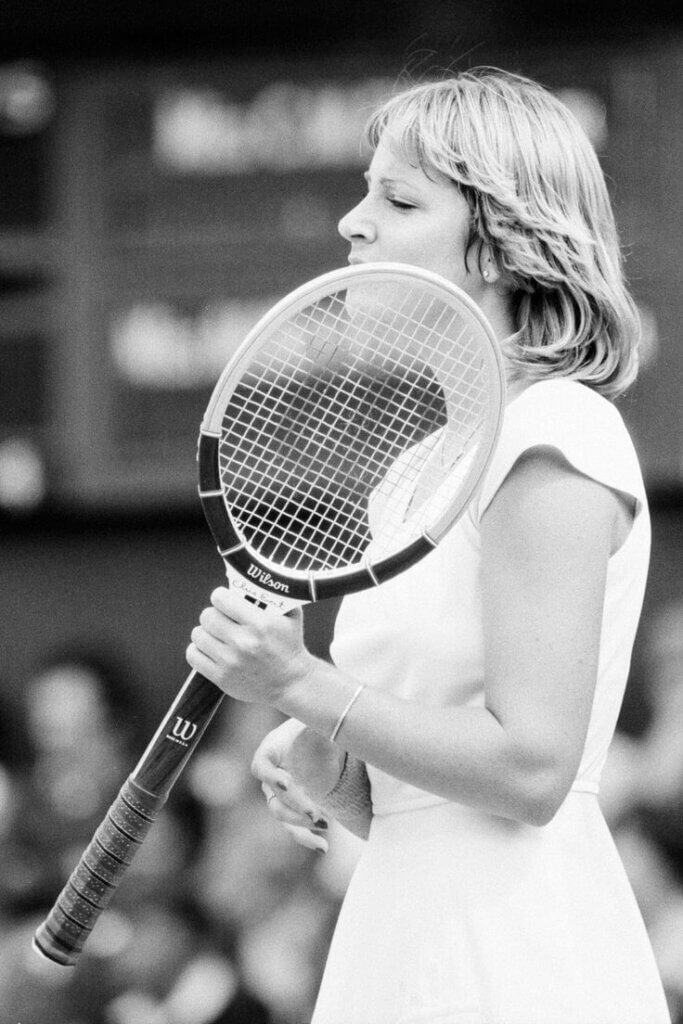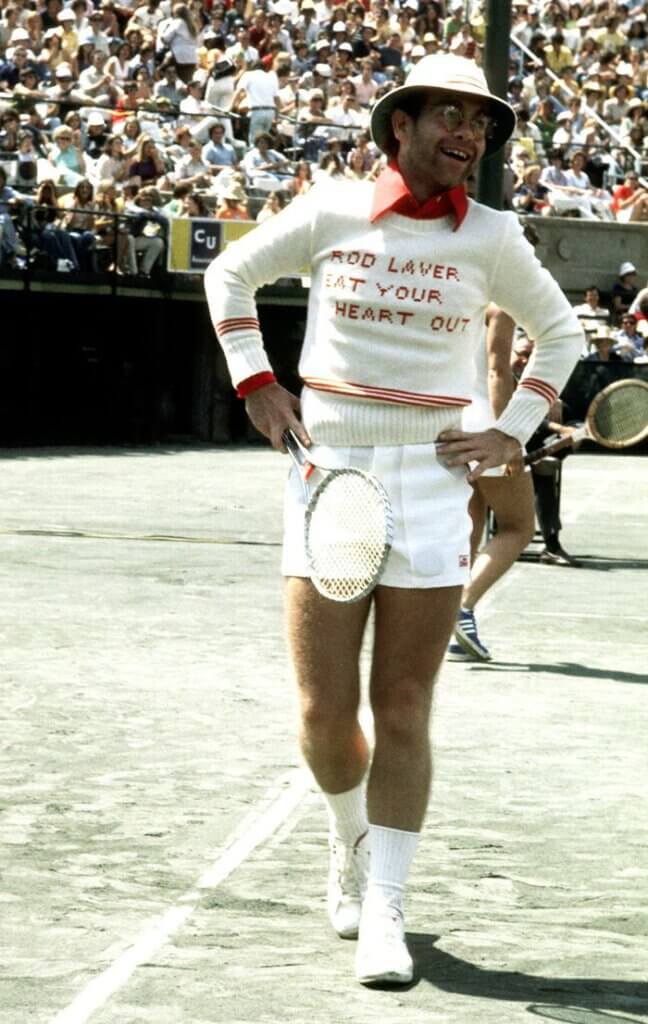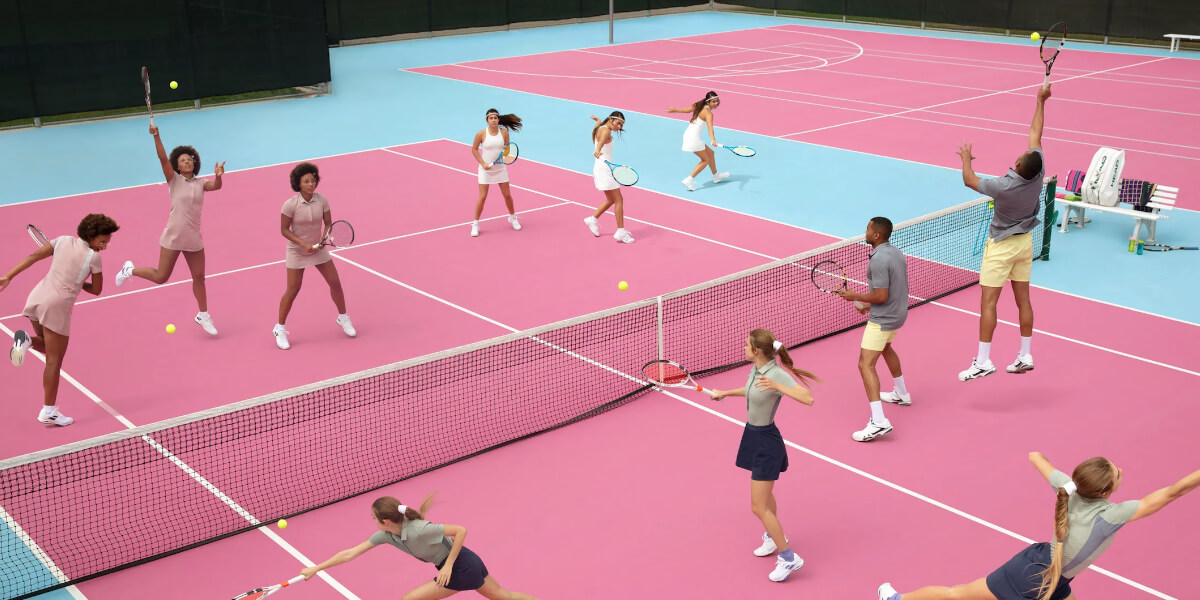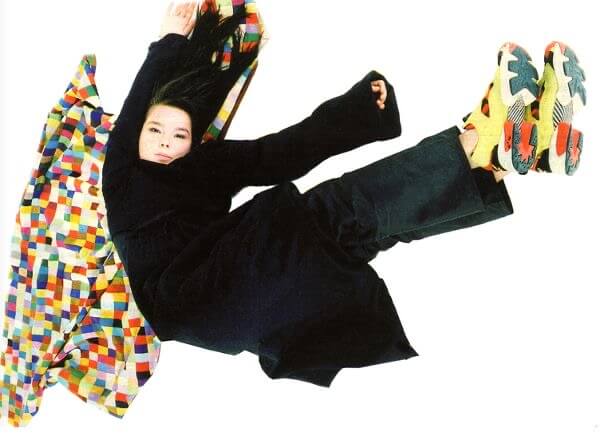Searches for ‘tennis, ‘tennis core’ and ‘tennis and style’ are up 80%, and it’s all thanks to it-girl and movie star Zendaya starring in Luca Guadanino’s new tennis movie ‘Challengers’. Although the film has only just been released, it has already generated a lot of buzz. People are finally seeing that tennis is an exciting and fashionable sport. And surprisingly, fashion hasn’t been in love with the sport for just a few years—even though Zendaya has brought it to the red carpet with Loewe, as the film’s infusion of style is largely due to the exclusive designs created by Jonathan Anderson and his creative direction at fashion house Loewe.
But from casual spectators to diehard loyalists with courtside or promenade seating, the international tennis tournament has always doubled as an unofficial fashion show. With an average of 1.27 million viewers watching last year’s tournament live over the course of two weeks, the players’ on-court attire resonates with fans and designers.
Tennis throughout history
Historically, the worlds of fashion and tennis have happily commingled. A prime example? Championship-winning tennis player Chris Evert wore a diamond line bracelet in the late 1970s with her uniform, which eventually led to the creation of an entire category and term used to describe the singular-row look—the tennis bracelet and tennis necklace. The intersection of activewear and extravagance was such a novel idea that it shook up the industry in ways that still resonate today.

Even though the long-standing tennis uniform of polo shirt and tailored shorts for men, and tennis dresses and panties for women—more on those later—do not always make a fashion moment, the pieces themselves remain iconic and popular. Evidence of that can be seen in the oversize logo polo shirt and variation on the pleated skirt from Sacai’s resort 2021 collection, and the pastel tailored tennis dresses from Versace’s resort 2021, each an indication of inspiration from the sport. Revisiting the chic attitude of tennis fashion beyond being just activewear has gained popularity. In fact, the development of activewear is entwined with the praise of performance and its integration into urban style, as opposed to previous decades when sweating or gaining muscles were inconceivable.
Other inspiring fashion trends include the visor, first worn by player Helen Willis in the Twenties; Chanel’s wide knickers for tennis in 1927; the tailored short for men in 1932; player Helen Hull Jacobs’ pleated knee-length shorts fashioned to look like a skirt in 1939, and the above-the-knee tennis dress introduced in 1937. Key footwear looks included nonabsorbent Hygeen insole, men’s tennis shoes from Hood Rubber Co. in 1929 and an improved version in 1958. Happily, we have today’s technology in this area for pros like Ashleigh Barty, Simona Halep, Karolina Pliskova, Serena Williams, Novak Djokovic, Rafael Nadal and Roger Federer.

By the Fifties, the tennis fashion horizon changed—as did much else in the world. Enter the couturier of tennis fashion, Ted Tinling. He introduced his lace-trimmed tennis panty in 1949 for player Gussie Moran, who shocked Wimbledon fans and left the staid British distinctly unamused. Many variations of the princess-line tennis dresses and panties combination are still being worn today. When the Virginia Slims Tour was created, Tinling was hired to dress players. Each year had a theme—black and pink one year and menthol green and blue another, according to King. Maureen Connolly wore Tinling’s designs when she became the first woman to win a Grand Slam—four major tournaments in 1953, losing only one set in those four tournaments. Tinling also created Connolly’s wedding dress in 1955.
Tinling’s quirky, colorful tennis-style dresses were a fixture on the professional tennis tour for more than 60 years, and his career also encompassed tennis-related sports fashion. Many of his dresses were worn by the Original Nine, on the Virginia Slim’s women’s tennis tour from 1971-1979. Famous for his quirky sense of style, Tinling once told WWD that he was inspired by couture lines and applications, Christian Dior’s “H line”and A-line silhouettes among them. Many would witness it on display the moment tennis legend King entered Houston’s Astrodome for the “Battle of the Sexes” televised game against male opponent Bobby Riggs in 1973.
By the Seventies, major changes were being seen in tennis. Male and female players are finally able to compete as professionals, controlling the output of their image. While indoor courts would end the seasonality of the game, professional tour circuits and extensive primetime television offered more coverage in living color.
The latter challenged the “white only” regulation dress rule for players and club members alike. To broaden the market for ath-leisure apparel, pastels and dark colors like blacks and browns helped boost the marketing and manufacturing of tennis as everyday wear. This push also offered players the rights to brand inclusion and birthed the new celebrity sports player. Stan Smith inked one of the first major sneaker deals with Adidas in 1973, while Bjorn Borg teamed with Fila, and Arthur Ashe and Billie Jean King endorsed and collaborated with Head sportswear. The latter landed her first deal in 1970. Having sold more than 100 million pairs of his signature shoes with Adidas.
But why is tennis still fashion’s favourite sport?
Old money and people’s desire for wealth
Weekends spent sailing on the French Riviera. Summer nights sipping champagne in the Bahamas. Christmas holidays skiing in the Swiss Alps. Large manors with sprawling Moores (with a stable full of thoroughbred horses nestled on the outskirts, of course). And—most importantly—an expensive closet overflowing with crisp linens, polo shirts by Ralph Lauren and designer purses, shoes and sunglasses. This is the way of ‘Old Money’—as far as TikTok understands it anyway.
The term ‘Old Money’ – and the lifestyle and status associated with it – has been a source of fascination for decades. The secret lives and unspoken codes of the obscenely wealthy have served as the backdrop for countless TV shows and films, and as inspiration for people around the world. At the time of writing, #OldMoney has received over 2.5 billion views on TikTok, with #OldMoneyAesthetics and #OldMoneyOutfits receiving 946 million and 222.5 million views respectively. Videos of attractive young people, impeccably dressed and in stunning locations, have become commonplace on the app. Consider some of the major fashion trends that have spread on TikTok this decade. The Equestrienne trend, Coastal Granny and of course Tennis Core; all are offshoots of the old money vibe. Even the shows we talk about—Succession, Gossip Girl, etc.—are discussed online in the context of quiet luxury and old money. If many facets of this aspirational life are unattainable (though we can still dream of weekends spent frolicking on superyachts cruising the southern coasts of Europe), the look is, in many ways, not.
But the realities of life for the rich and powerful have often fascinated people. And sport is just part of it. Tennis aesthetic is seen as a sport for the rich because it is often associated with exclusive clubs, expensive equipment and high membership fees. Historically, in some countries, tennis was an elite sport played by the wealthy, and many famous tennis clubs were only accessible to members who could afford to play there.
In addition, tennis-style fashion often requires expensive equipment, such as rackets, balls and specialised clothing, which may not be affordable for everyone. Tennis tournaments and events can also have expensive entry fees. This contributes to the sport’s image as exclusive. In short, tennis was usually out of reach for the average person hence making it oh so appealing.
Activism on the tennis court
But even though tennis was (and still is) seen as a sport for the rich, the court quickly became a space for activists in the sport, and a place where players through fashion drew attention to grievances within the sport and in the wider world.
Their choices also are emblematic of societal changes, according to tennis legend Billie Jean King in an interview with WWD. From the Victorian era’s corseted tennis requirements for women to the current less-restrictive, body-baring styles, tennis attire is indicative of the freedoms that have been fought for.
“Take the 1800s to now, tennis fashion shows the progress that we have made in society and in our world. That’s why I like it—it reflects what’s going on in the world,” King said to WWD.
Through the 20th century to today, the sport of tennis has provided a unique multilevel platform for the marketing of branded product via the player, the fans, and the fashion world. As companies strive to be more inclusive, they are partnering with players of different backgrounds to appeal to a wider customer base than the traditional country club set. The notion that tennis—like other sports—can be highly political has been ingrained for decades. In recent days, billion-dollar brands like Nike and Adidas have voiced their support for athletes, who are using their platforms for justice. Naomi Osaka’s decision last Wednesday to not compete in the rest of the Western & Southern Open was based on what she called “the continued genocide of Black people.” Explaining her stance on Twitter, the 22-year-old Nike-sponsored athlete said she didn’t expect anything drastic to happen by not playing, but “if I can get a conversation started in a majority white sport, I consider that a step in the right direction.”

Interestingly, since its inception, tennis has been accepted as a suitable sport for everyone. The on-court or off-the-court branded tennis fashions have always been an impressive ally to designers from the high street to fast fashion.
Stan Smith spoke of the sport’s lasting appeal: “Both the players—men and women—and the fans are going to be influenced by what they see on the court. The players are not in uniforms. They’re not wearing helmets. They’re readily recognized on the street. It’s very international so there’s a very international influence on what the players might wear.”
As more people took up the game, more clubs and parks sprang up. Hollywood and the fashion and entertainment industries were not far behind, thanks in part to celebrity tennis tournaments. Recognising the marketing potential, many Seventh Avenue designers, including Bill Blass, Oleg Cassini and Ralph Lauren, created logo-inspired tennis fashions on and off the court. By the mid-seventies, tennis had become one of the most lucrative sectors of the apparel and sportswear industry. And while some innovations are common to all sports-related industries, tennis is the only sport that has remained fashionable and relevant into the 21st century by providing access to the lifestyle, the game and the players, resulting in a dedicated audience unlike any other sport, making “tennis for everyone”. Unlike golf and basketball, tennis offers a more versatile post-game wardrobe.




























